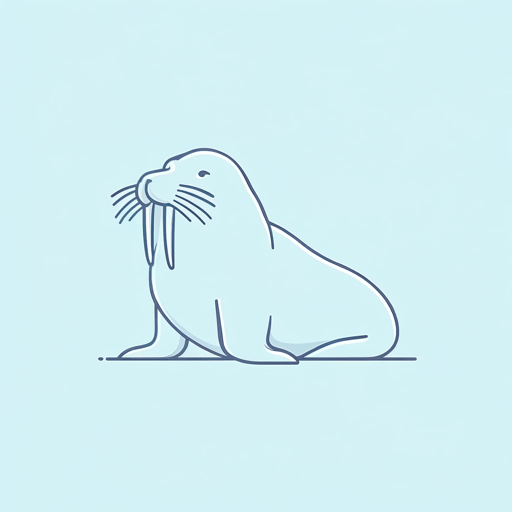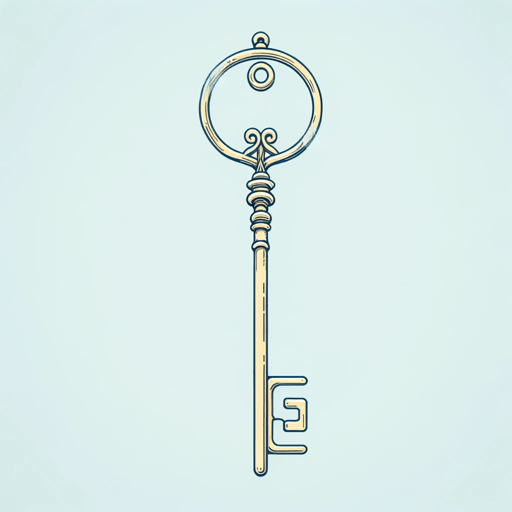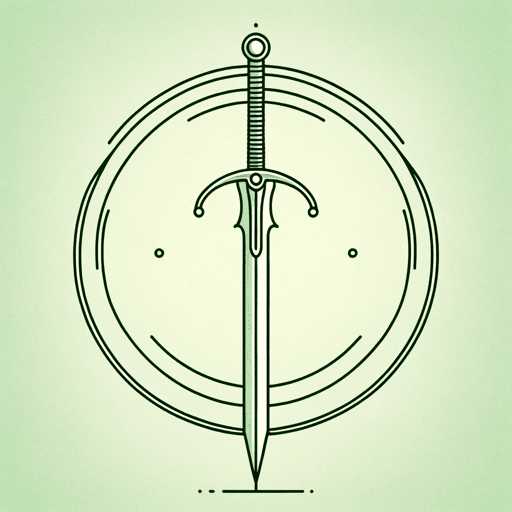22 pages • 44 minutes read
Lewis CarrollThe Walrus and the Carpenter
Fiction | Poem | Middle Grade | Published in 1871A modern alternative to SparkNotes and CliffsNotes, SuperSummary offers high-quality Study Guides with detailed chapter summaries and analysis of major themes, characters, and more.
Summary and Study Guide
Overview
“The Walrus and the Carpenter” is a narrative poem by Lewis Carroll, contained in his children’s novel Through the Looking-Glass, And What Alice Found There (1871). The poem is recited by the twins Tweedledum and Tweedledee to Alice during her adventures in the looking-glass world. The narrative follows the titular Walrus and Carpenter, who invite some young oysters to accompany them on a walk. Unbeknownst to the naive oysters, the two protagonists have ulterior motives and wind up devouring them.
Carroll’s “The Walrus and the Carpenter” became popular as soon as it was published and remains a familiar example of Victorian nonsense verse, a form of poetry that typically combines easily recitable rhythm and rhyme schemes with subject matter that defies logic or “sense,” often for humorous effect. Like other episodes and poems in Carroll’s Alice novels, such as his “Jabberwocky,” “The Walrus and the Carpenter” is marked by its playfulness and absurdity, featuring talking animals in silly situations. Despite the poem’s absurdity, however, it has been the subject of much critical attention, with scholars and the public suggesting many different interpretations for the poem. Many have looked beyond the light-hearted verse to discover more serious themes, such as Deception and Betrayal, Moral Ambiguity and Hypocrisy, and The Exploitation of the Weak by the Powerful.
Poet Biography
Lewis Carroll is the pen name of Charles Lutwidge Dodgson, a British author and mathematician best known for his contributions to children’s literature and his penchant for wordplay and whimsy. Born on January 27, 1832, in Daresbury, Cheshire, Carroll began writing at an early age and displayed a talent for prose as well as verse. He attended Christ Church, Oxford, where he excelled in mathematics and eventually became a lecturer and mathematician. Carroll would hold the Christ Church Mathematical Lectureship for 26 years.
Despite his gifts as a mathematician, it was as an author that Carroll would become a household name. Carroll’s most famous works, Alice’s Adventures in Wonderland (1865) and its sequel, Through the Looking-Glass, and What Alice Found There (1871), emerged from his friendship with the family of Henry Liddell, the dean of Christ Church, and it has often been argued that Alice Liddell was the inspiration for Carroll’s Alice. The Alice novels, characterized by their fantastical plots and imaginative language, would become some of the most important examples of Victorian nonsense literature.
Over the course of his long writing career, Carroll developed a distinctive style marked by wordplay, manipulation of logic, and nonsense. He was also known for his meticulous attention to detail that allowed him to create intricate worlds and iconic characters, including the White Rabbit, the Cheshire Cat, and, of course, Alice herself.
Carroll’s personal life has sparked some controversy. He had a strong interest in children, particularly young girls, and formed close friendships with several of them (including Alice Liddell). Some scholars and biographers have speculated that Carroll’s relationships with children were inspired by sexual interest, while others have contended that there is no evidence to substantiate such views.
Carroll succumbed to pneumonia on January 14, 1898, at the age of 65. His innovative stories and poems, with their ability to blend childish whimsy with adult themes, remain influential in world literature and popular culture. There have been numerous adaptations and interpretations of Carroll’s works in various media, including film, radio, and music.
Poem Text
The sun was shining on the sea,
Shining with all his might:
He did his very best to make
The billows smooth and bright—
And this was odd, because it was
The middle of the night.
The moon was shining sulkily,
Because she thought the sun
Had got no business to be there
After the day was done—
“It’s very rude of him,” she said,
“To come and spoil the fun.”
The sea was wet as wet could be,
The sands were dry as dry.
You could not see a cloud, because
No cloud was in the sky:
No birds were flying overhead—
There were no birds to fly.
The Walrus and the Carpenter
Were walking close at hand;
They wept like anything to see
Such quantities of sand:
“If this were only cleared away,”
They said, “it would be grand!”
“If seven maids with seven mops
Swept it for half a year,
Do you suppose,” the Walrus said,
“That they could get it clear?”
“I doubt it,” said the Carpenter,
And shed a bitter tear.
“O Oysters, come and walk with us!”
The Walrus did beseech.
“A pleasant walk, a pleasant talk,
Along the briny beach:
We cannot do with more than four,
To give a hand to each.”
The eldest Oyster looked at him,
But never a word he said:
The eldest Oyster winked his eye,
And shook his heavy head—
Meaning to say he did not choose
To leave the oyster-bed.
But four young Oysters hurried up,
All eager for the treat:
Their coats were brushed, their faces washed,
Their shoes were clean and neat—
And this was odd, because, you know,
They hadn’t any feet.
Four other Oysters followed them,
And yet another four;
And thick and fast they came at last,
And more, and more, and more—
All hopping through the frothy waves,
And scrambling to the shore.
The Walrus and the Carpenter
Walked on a mile or so,
And then they rested on a rock
Conveniently low:
And all the little Oysters stood
And waited in a row.
“The time has come,” the Walrus said,
“To talk of many things:
Of shoes—and ships—and sealing-wax—
Of cabbages—and kings—
And why the sea is boiling hot—
And whether pigs have wings.”
“But wait a bit,” the Oysters cried,
“Before we have our chat;
For some of us are out of breath,
And all of us are fat!”
“No hurry!” said the Carpenter.
They thanked him much for that.
“A loaf of bread,” the Walrus said,
“Is what we chiefly need:
Pepper and vinegar besides
Are very good indeed—
Now if you’re ready, Oysters dear,
We can begin to feed.”
“But not on us!” the Oysters cried,
Turning a little blue.
“After such kindness, that would be
A dismal thing to do!”
“The night is fine,” the Walrus said.
“Do you admire the view?
It was so kind of you to come!
And you are very nice!”
The Carpenter said nothing but
“Cut us another slice:
I wish you were not quite so deaf—
I’ve had to ask you twice!”
“It seems a shame,” the Walrus said,
“To play them such a trick,
After we’ve brought them out so far,
And made them trot so quick!”
The Carpenter said nothing but
“The butter’s spread too thick!”
“I weep for you,” the Walrus said:
“I deeply sympathize.”
With sobs and tears he sorted out
Those of the largest size,
Holding his pocket-handkerchief
Before his streaming eyes.
“O Oysters,” said the Carpenter,
“You’ve had a pleasant run!
Shall we be trotting home again?”
But answer came there none—
And this was scarcely odd, because
They’d eaten every one.
Carroll, Lewis. “The Walrus and the Carpenter.” 1871. Poetry Foundation.
Summary
The sun is shining “with all his might” (Line 2) over the sea, even though it is “the middle of the night” (Line 6), and the moon is upset that the sun is infringing on her time. Meanwhile, the Walrus and the Carpenter are walking along the beach, troubled by the huge quantity of sand.
The duo encounters some oysters, and the Walrus invites them to accompany them on their walk. He promises them “[a] pleasant walk, a pleasant talk, / Along the briny beach” (Lines 33-34), though he says that he and the Carpenter can only help four along. While “[t]he eldest Oyster” (Line 37) declines the invitation, many of the younger oysters are eager to join the Walrus and the Carpenter.
Soon, much more than four oysters are following the Walrus and the Carpenter. After walking a bit further, the Walrus and the Carpenter rest on a rock, and the oysters stand in a line in front of them. The Walrus suggests various topics of conversation, and soon begins listing items required for a meal, especially items that go well with oysters—“[a] loaf of bread” (Line 73) and “[p]epper and vinegar” (Line 75).
The oysters begin to worry that the Walrus and the Carpenter intend to eat them as the Walrus talks about the beauty of the night and how much he is enjoying the oysters’ company. As the Carpenter sulks and complains about the meal—“[t]he butter’s spread too thick!” (Line 96)—the Walrus expresses shame for tricking the oysters and weeps.
The Carpenter tells the oysters that it is time to go home and that they’ve “had a pleasant run” (Line 104), but there is no response, as he and the Walrus have “eaten every one” (Line 108).








Related Titles
By Lewis Carroll



